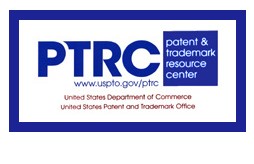Libraries
T®ademark Basics
What Is a Trademark?
Any word, name, symbol, device (or any combination thereof) used to identify and distinguish goods or services and to indicate their source.
Other things that have been trademarked:
- a color: (e.g.: Tiffany Blue, UPS Brown)
- a scent, as long as the scent isn't the essential function (e.g.: Verizon stores waft a scent they trademarked)
- a sound (e.g.: NBC chime was the first)
Trademarks is a umbrella term that covers five types of marks:
- Trademarks — used to market goods
-
- apparel and footwear
- packaged foods
- electronic devices and machines
- tools
- pharmaceuticals
- Service Marks — used to market services
-
- banking and investments
- restaurants
- transportation and delivery
- repair and restoration services
- medical care
- salons and spas
- Collective Marks — used by members of an association, cooperative, etc., to identify and distinguish their goods and services
-
- FTD (florists)
- Society of Certified Public Accountants (CPA)
- Girl Scouts of America (only members can sell girl scout cookies)
- Independent Grocers Alliance (IGA)
- Collective Membership Marks — adopted for the purpose of indicating membership in an organized group
-
- AAA
- National Honor Society
- Boy Scouts of America
- National Rifle Association
- United Auto Workers
- Certification Marks — use to market quality or standards (e.g.: third party verified, regional, materials, mode of manufacture)
-
- Underwriter Laboratories (UL)
- Made in America
- Idaho Potatoes
- USDA Organic/Non-GMO
- Good Housekeeping seal
- Parmigiano-Reggiano
- Vidalia
The ® Symbol
Only trademarks that have received federal registration with the U.S. Patent and Trademark Office may use this symbol with their mark
Can You Use a Mark without Registering it?
Short answer: yes
Types of Trademark Protection:
- Common Law
- Protection derived from use in commerce
- State Registration
- Registered with one or more U.S. States
- Federal ®egistration
- Registered with the U.S. Patent and Trademark Office
- Continually renewable as long as you are using the mark
- Continued proof of the use of the mark is required, along with the requisite fees, to maintain registration
- Registration in Other Countries
- Trademarks are territorial and must be filed in each country where protection is sought.
Claiming an Unregistered Mark
———> ™ for a trademark
———> ℠ for a service mark
Fun Fact!
The USPTO only searches the database of federally registered marks in deciding whether to register a mark.
So, What Affect Can that Have?
It means that even if you get a registration for your mark from USPTO, you may later get a cease and desist letter , and have to give up your mark to someone who has been using your mark longer than you.
How Does One Avoid That?
Do your due diligence before you file, and make sure no one else in your mark’s category (of goods and/or services) is using your mark or one similar enough to cause a
likelihood of confusion
. And...
Document, document, document!
Social media can be your friend here. A photo of your mark on goods, services, establishments, etc., shared on Instagram, Facebook, Twitter, or other social media will have a date stamp to prove your use of the mark in commerce that will likely outlive any device you might have stored it on.
Trademarks are Organized by Types of Goods and Service
You can’t use the same or similarly sounding or spelled name for a product in the same category of goods and services, but the same name can be used for something in another area of goods or services. A good example of this is the word fusion, trademarked by Gillette for the Gillette Fusion razor and Ford Motor Company for the Ford Fusion automobile.
When choosing whether or not to award a trademark, the trademark examining attorney will check for other marks already awarded and determine whether awarding you your mark would cause a likelihood of confusion .
Some marks are off-limits simply because they are so well known already that using them would automatically create a likelihood of confusion. For example, let's say someone is starting a paint company and wanted to call it Coca-Cola Paints. Even though paint is in a different category than beverages, calling this company or product Coca-Cola Paints would cause a likelihood of confusion with customers who might think that the company Coca-Cola® was now making paint. The USPTO would not award a trademark for this company or product, and the business owners would likely end up in the cross-hairs of the intellectual property attorneys working for Coca-Cola® if they tried to use it — not an especially great place to be.
Likelihood of Confusion
In order to find a likelihood of confusion, the marks do not have to be identical.
If marks...
- sound alike when spoken or...
- are visually similar and...
- are to be used in related goods and/or services or...
- create the same general commercial impression in the consuming public’s mind, the marks may be considered confusingly similar
Likelihood of Confusion Analysis
- Similarity in sound, appearance, and/or meaning may be sufficient to support a finding of likelihood of confusion, depending on the relatedness of the goods and/or services.
- Is there a conflict with a registered mark or potential conflict with a prior-filed application?
- Would consumers be likely to believe in error that the goods (or services) come from the same company?
If “yes” is the answer to any of these questions, the TM examining attorney will refuse the application. Click here for more on the likelihood of confusion from the USPTO.


Connect with us: